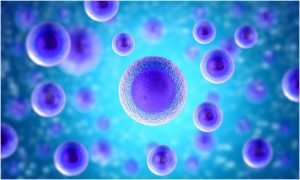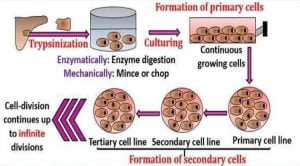Technical Insights Into Fibrosis, Cellular Models, and Translational Applications
Kidney diseases continue to cause high morbidity and mortality rates throughout the world, and chronic kidney disease (CKD) is among the diseases that plague the faces of millions of people. A key pathogenic characteristic of progressive CKD is renal fibrosis, involving excessive deposition of extracellular matrix (ECM), tubular atrophy, loss of peritubular capillaries, and progressive nephron loss.
Fibrotic progression is human-specific and is thus vital in the development of clinically relevant therapies. Thus, Human Kidney Fibroblasts have become the foundation of advanced renal research.
Scientists are also committed to the availability of ethically obtained, high-quality human kidney cells, including primary fibroblasts and well-characterized fibroblast lines, to support human-based kidney fibrosis studies.
Human Kidney Fibroblasts and Their Role in Renal Structure and Pathophysiology
Kidney fibroblasts of human origin inhabit the kidney interstitium and ensure its homeostasis by regulating ECM turnover, providing structural support, and paracrine signaling between fibroblasts and epithelial and endothelial cells. They control:
-Basal collagen synthesis
-Plasticity of ECM by means of matrix metalloproteinases.
-The pressure of interstitial fluid and transportation.
-Crosstalk with tubular epithelial cells, macrophages, and pericytes.
Yet, repetitive metabolic, inflammatory, or ischemic injuries activate fibroblasts. The process induces differentiation of quiescent fibroblasts into contractile myofibroblasts, which express α-smooth muscle actin, increased collagen synthesis, and a pro-fibrotic secretory expression.
Myofibroblasts are the main mediators of interstitial fibrosis in the human kidney. Therefore, understanding this fibroblast-myofibroblast transition is central to renal fibrosis studies. Using human kidney fibroblast cell lines and primary fibroblasts facilitates precise modeling of human-specific molecular drivers.
Human-Focused Insights in Kidney Fibrosis Research
A major strength of using Human kidney fibroblasts is their ability to capture human-specific responses to fibrogenic stimulation:
- Angiotensin II activates AT1R-dependent pathways leading to oxidative stress and pro-fibrotic gene expression.
- Hyperglycemia, also relevant to diabetic kidney disease, modifies fibroblast metabolism, increases ROS production, and worsens local inflammation.
- Hypoxia stabilizes HIF-1A, which promotes ECM deposition and fibroblast growth.
- TGF-β1 induces SMAD2/3 phosphorylation, upregulates ACTA2 (α-SMA), COL1A1, COL3A1, FN1, and drives cytoskeletal reorganization.
Human fibroblasts also exhibit specific epigenetic markers, such as altered DNA methylation and microRNA signatures (miR-21, miR-29 family), highly informative for translational fibrosis studies.
These human-specific features make primary fibroblasts exceptionally useful for investigating:
- Fibroblast heterogeneity in human kidneys
- Crosstalk of tubular epithelial cells undergoing epithelial-to-mesenchymal transition
- Immune interactions in chronic inflammation.
- Feedback loops of ECM-stiffness, which sustain myofibroblast activity.
These insights directly lead to the biosignatories of biomarker discovery, anti-fibrotic medicine, and precision medicine of CKD.

Histone modification and DNA methylation in kidney fibrosis. Open access, CCBY 4.0 Licence. Source: Huang, R., Fu, P. & Ma, L. Kidney fibrosis: from mechanisms to therapeutic medicines. Sig Transduct Target Ther 8, 129 (2023). https://doi.org/10.1038/s41392-023-01379-7
Significance of Human Kidney Fibroblast Cell Lines in Experimental Models
Human kidney fibroblast cell lines offer several advantages for controlled and mechanistic research:
- Easy propagation and adequate usefulness in screening high-throughput, transcriptomic profiles, and proteomic results.
- Amenable to genetic manipulations, such as CRISPR-Cas9 editing, siRNA knockdown, and overexpression assays.
- Kidney fibroblast cell lines offer consistency; they do not experience donor-to-donor variability, unlike cell lines, so the experimental conditions are identical.
- Above all, enabling uniform comparative analyses by maintaining more stable phenotype through passages.
These cell lines possess essential markers like vimentin, fibroblast-specific protein-1, and the ability to produce collagen, making them suitable for modeling early and advanced fibrosis stages.
Accordingly, researchers frequently use a two-tiered approach using kidney fibroblast cell line:
- Perform pathway screening or drug testing,
- Diagnostic and validation of promising results in primary human kidney fibroblasts.
Translational Sciences: Drug Screening and Nephrotoxicology
Drug-induced toxicity frequently affects the kidney. Human Kidney Fibroblasts are instrumental in identifying fibrogenic, inflammatory, or cytotoxic responses induced by agents, such as:
- Anticancer agents
- Immunosuppressive drugs
- Antibiotics, and
- Environmental toxins.
Assays continually conducted using human kidney fibroblasts include:
- ECM quantification (in terms of collagen I/III, fibronectin)
- Assays for cell viability and apoptosis
- Measurement of ROS levels
- Profiling of cytokines (TNF-1, IL-1,5, IL-6), and
- Western blotting to detect signaling pathway activation
Furthermore, anti-fibrotic compounds targeting TGF-β, PDGFR, CTGF, integrins, the renin-angiotensin system, and metabolic pathways are routinely evaluated using human fibroblast models.
Moreover, using human kidney cells at early stages helps eliminate candidates with off-target nephrotoxic effects, reducing costly failures in preclinical or clinical phases.
Human Kidney Fibroblasts for Tissue Engineering, 3D Cultures, and Organoids
Recent developments in kidney bioengineering involve using human kidney fibroblasts to model physiologically relevant in vitro systems. Accordingly, fibroblasts facilitate various important processes:
- Supporting tubular morphogenesis in co-culture systems
- Promoting the maturation of kidney organoids
- Helping model human filtration and interstitial function in kidney-on-chip systems
- Providing ECM structure in engineered renal tissues
Furthermore, in regenerative medicine, human fibroblasts also guide epithelial healing by releasing growth factors, chemokines, and ECM components that influence tissue remodeling.
The Importance of Human Kidney Cells of high quality
Technical reliability is critical for renal research. At Kosheeka, all human kidney fibroblasts and related human kidney cells undergo rigorous validation processes of:
- Morphological validation,
- Profiling of markers (VIM, FSP1, COL1A1),
- Testing for mycoplasma, and
- Evaluation of the growth curve, and finally,
- Maintenance of viability and passage-limit records.
Hence, high-quality control and sourcing of ethically sound materials ensure the high accuracy of the experiments.
Conclusion
Human kidney fibroblasts present a distinct model of human-specific signals of renal fibrosis, cellular communication, matrix remodeling, and progression of CKD. Moreover, by using primary fibroblasts along with fixed kidney fibroblast cell lines, researchers can uncover mechanistic pathways in detail and ultimately generate clinic-relevant information.
By practicing quality, authenticity, and ethical sourcing, Kosheeka helps the laboratories realize the full potential of human kidney cells to achieve cutting-edge research and therapeutic development in renal studies.
Product-Related Queries, Or Partnership Inquiries
FAQ’s
Q-What is the rationale for using human kidney fibroblasts in renal fibrosis studies?
These are the only cell types to faithfully recapitulate human-specific fibrotic responses, including TGF-β-activated myofibroblast responses, ECM deposition, and epigenetic marks not replicated by rodent cells.
Q-How are kidney fibroblasts cells, as a cell line, used in mechanistic studies?
They provide predictable phenotypes, facilitate screening, and are compatible with CRISPR-Cas9, siRNA, and overexpression reagents, enabling predictable pathway dissection and drug screenings.
Q-What are the applications of human kidney fibroblasts in a developed renal model?
They help with tubular morphogenesis, organoid maturation, and kidney-on-chip filtration modeling, ECM scaffolding, and nephrotoxicity assays that assess ROS, cytokine, and signaling activations.



